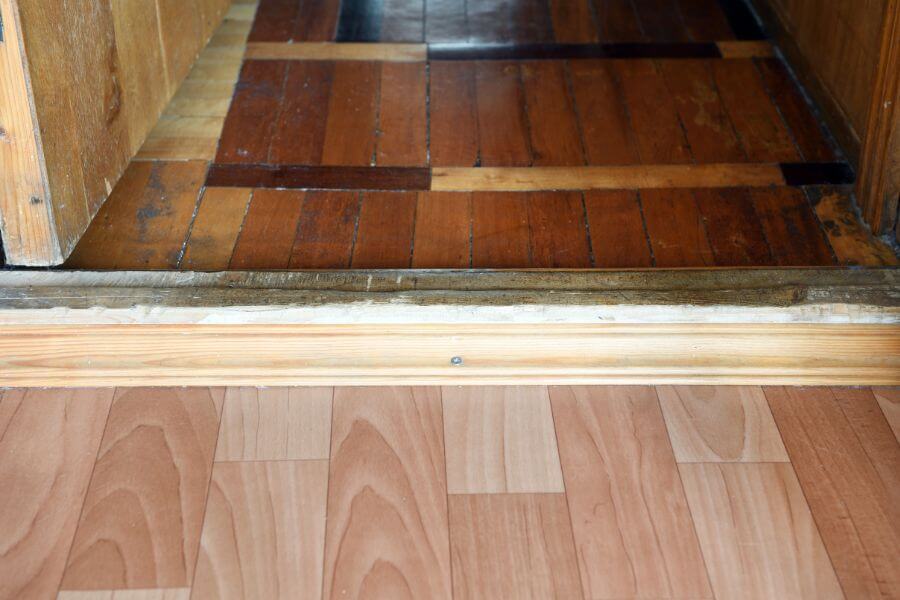Door saddles and thresholds tend to be used interchangeably – and for a good reason. Both are placed at the bottom of the door and can help with insulation and energy efficiency.
They can add aesthetic value as well. However, they are different in several ways. Take a look.
What Is a Door Saddle?
A door saddle is called such because it looks like a saddle. You’ll find it on the floor beneath the door when it’s closed.
The saddle may also be on other house parts where floor levels differ.
Check out the saddle example on Amazon
What Are the Main Functions of a Door Saddle?
The primary function of a door saddle is to create a seamless transition between one type of flooring to another, particularly those of varying heights.
What Is the Threshold on a Door?
A threshold on a door is a piece of solid material – metal, wood, or PVC – that runs along the bottom of a door.
Check out the threshold example on Amazon
What Are the Main Functions of a Threshold?
The primary function of a threshold is to prevent water from flowing in, so you’ll find it slightly raised.
It also covers the seam where two different floor coverings meet. For example, tiles form the kitchen and parquet from the living room.
Door Saddle vs. Threshold: Key Differences
We can better understand the differences between a door saddle and a threshold by looking at specific aspects.
Materials Used
Doors’ saddles are generally made of metal – typically aluminum, brass, and stainless steel – and stone, such as marble.
Thresholds can also be made of metal. However, unlike door saddles, they are usually made from wood or PVC.
Installation
Door saddles and thresholds also differ in terms of installation. You can only install door saddles on-site. On the other hand, Thresholds can come pre-made, although you can also have them installed on-site for customization.
Benefits
One of the main benefits of a door saddle is that it can help insulate heat and sound. This can mean energy savings and a more peaceful time at home for you. This is apart from achieving a smooth transition between flooring types.
On the other hand, the main benefit of a threshold is that it acts as a water barrier. This is very important as water seepage can lead to problems that can be expensive to fix.
Maintenance
Regular maintenance is necessary to make the most out of your door saddle and threshold. You can use epoxy paint and silicone caulk to ensure your door saddle for an airtight seal.
As for your threshold, you can protect it through weatherstripping.
Replacement
Both door saddles and thresholds need replacement now and then, especially when they’re exposed to elements like heat and water. However, if you use weatherstripping on your threshold, you might not have to replace it as often as your door saddle.
Cost
As the door saddles are made out of metal or stone, they are generally more expensive than thresholds, which can be made from cheaper materials such as wood laminate and PVC.
F.A.Q.
Do All Doors Need a Threshold or Saddle?
Not necessarily. But given the benefits of door saddles and thresholds, such as energy efficiency and protection from the elements, they are worth it.
Of course, there are other things you might have to consider as well, such as accessibility. But you can always discuss your options with your home improvement provider.
What Is the Difference Between a Door Sill and a Threshold?
You can find the door sill (which might also be referred to as the door saddle) sitting on the floor’s foundation. It’s often made of metal (e.g., aluminum) or stone (e.g., marble).
On the other hand, a threshold is a piece of solid material – usually wood or plastic – extending along the bottom of the door. Both are great on a door, as they offer various benefits, such as insulation, protection from water seepage, and aesthetic value.
However, they differ in certain aspects, such as cost, installation, and maintenance.
Door Saddles and Thresholds: Both Are Great to Have
Door saddles and thresholds may differ in some ways, but one thing is for sure: they offer advantages that are too good to take for granted.












